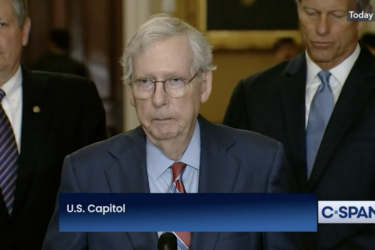Every print journalist knows how difficult it is to write a lede that captures the spirit and subject of a story while giving people a reason to read further.
 Judith Graham (@judith_graham), AHCJ’s topic leader on aging, is writing blog posts, editing tip sheets and articles and gathering resources to help our members cover the many issues around our aging society.
Judith Graham (@judith_graham), AHCJ’s topic leader on aging, is writing blog posts, editing tip sheets and articles and gathering resources to help our members cover the many issues around our aging society.
If you have questions or suggestions for future resources on the topic, please send them to judith@healthjournalism.org.
The temptation sometimes is to spice up that first paragraph and give it pizzazz, even if it ends up not quite on the mark.
I suspect that happened to The Associated Press’ recent story on hospice care, which appeared in newspapers across the country as the latest installment in Aging America, the joint AP-APME project examining the aging of the baby boomers and its impact on society. Here’s how the reporter, Holly Ramer, got into the piece:
“Forget that image of a hospice worker sitting next to a hospital bed in a dimly lit room. Today, hospice care is delivered everywhere from the golf course to the casino.”
Really? The problem is the story doesn’t provide any evidence for this assertion other than a supporting quote from Robin Stawasz, family services director at Southern Tier Hospice and Palliative Care in upstate New York.
It’s an odd way to introduce a piece about end-of-life care, which is what hospice is all about. Maybe workers don’t hold hands in dimly lit rooms. But their job is still to attend to those who are deemed to have six months or less to live.
Does hospice really want to pretend that its business is not helping people get “ready to die,” as Stawasz suggests? Isn’t that the core function that lies at the heart of this service, along with providing comfort care and helping people live their remaining days with as much dignity, control and enjoyment as possible?
Maybe that’s where the golf courses and casinos come in. If people want to spend their time golfing or gambling, it’s good that hospice services help make that possible. But how often does this happen? To me, it sounds more like a marketing pitch than real news, and I don’t think it belongs on top of this story.
Consider this: the median stay in hospice care was 21.1 days in 2010, according to a report from the National Hospice and Palliative Care Organization. That’s three weeks – the three weeks before someone dies, for the most part. (Some people leave hospice because their illnesses don’t resolve in six months and they move on to another type of care.) How often are people focusing on diverting entertaining and recreational pursuits during this period?
As for the rest of the story, it seems to me there are three main points. The first – something I didn’t know before – is that hospice providers are branching into “pre-hospice” services. That’s interesting, and I wish the reporter had given us more information about how many providers are doing this and what they’re doing.
Second, hospices are reaching out to patients other than cancer patients, the patient population they have served from the start. As anyone who’s covered this topic knows, this isn’t really a new trend and to present it as such is a bit naïve. But still, the underlying point is important: Hospice isn’t just for people with cancer.
Finally, Dr. Ira Byock, one of the foremost leaders this field, told the reporter he doesn’t think the hospice industry is prepared for the coming surge of Baby Boomers. Again, I’d like to have seen some deeper analysis. What’s the expected demand for hospice care 20 years from now? Do current hospice providers have the ability to meet that demand? If not, how much would the industry have to grow to be able to do so? What are the barriers to growth and how is the industry addressing them?
The theme of this story, “hospice is changing,” is a good one. But if that’s the real subject, why leave out the rise of for-profit hospice providers, what they’re doing to gain a larger share of this business, and how that affects not-for-profit providers?
My bottom line for reporters is this: Be very clear about what your story is about. That’s the single most important decision you can make. (Often, it’s a decision that’s made in the process of reporting a story – I totally get that.) Once you know your topic, be rigorous about exploring its dimensions. Ask for data, evidence, proof whenever possible. Ask for concrete examples and details such as when new policies were implemented and what impact changes have had.
Don’t go with “soft” trends in your lede unless you’re absolutely convinced this is the most important point you have to make in your story. If it’s not – your job is to be brutally honest here – then put it down below in the “worth noting but not all that important” section and put something more essential up top.









